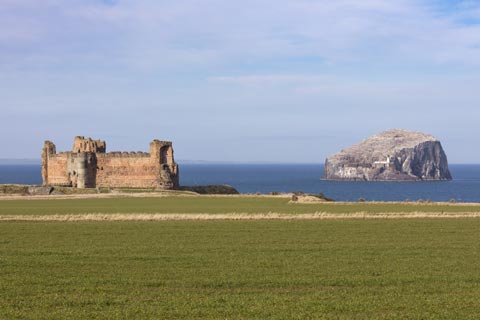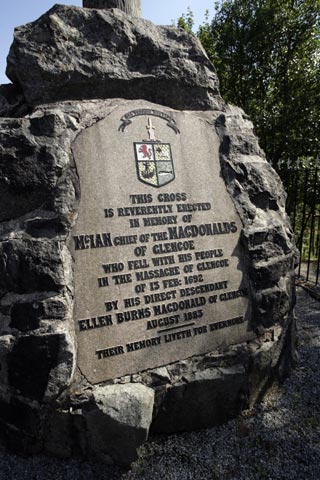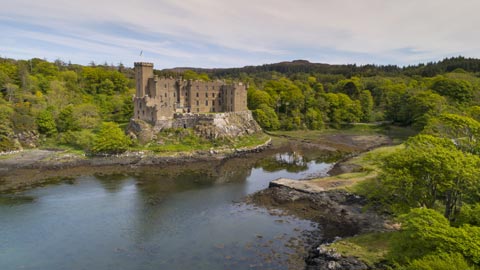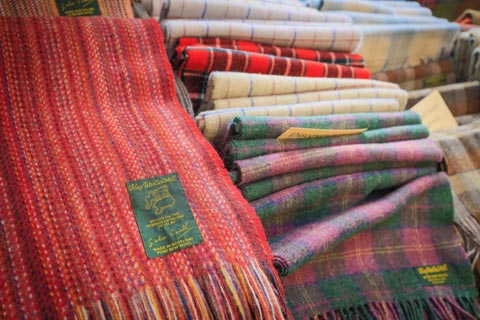When you think of Scotland, what first springs to mind? The beautiful landscapes we seem to do so well, the history we have on offer… or maybe you think of Highland clans? Well, if you’ve always wanted to know more about our clans, you’ve come to the right place, as this topic is the focus of our attention today!
Join us as we explore what a clan is and how they work. Learn more about some of the most well-known and famous Scottish clans, too. And make sure to read to the end, where we’ll also tell you how to get involved and learn more about your family clan and tartan!
What is a clan?

The word clan is derived from “clann”, the Gaelic word for children or stock. The Google definition of Clan is “a close-knit group of interrelated families, especially in the Scottish Highlands”. This is a very simplified definition for quite a complicated concept!
There are thought to be hundreds of clans in Scotland, although a specific number is difficult to come by. Some say 1000+, others say 200, and the numbers 400 and 500 have also been previously stated. In addition, the Standing Council of Scottish Chiefs mentions approximately 140 clan names. However, whatever the actual number, we can confirm that there is lots of clan-related trivia for you to get your teeth into!
Each Clan has its own name, land/territory, Clan Seat, Clan Chief, tartan, coat of arms, motto and, of course, a history that continues to be told to this day. They often share a camaraderie that has continued to live on for many clans.
Scottish Clan System
Clans work in a systematic manner, not unlike many organisations! At the top you have the Clan Chief, closely followed by the Tanist, who would be responsible for taking over any chiefly duties should the Chief not be present.

Then you had the Chieftains, who would oversee the different sections of each Clan. Within the Chieftains, you would have different designated titles and roles, too – we did say clans are more complex than you might think! You would then have the actual Clan itself.
It may surprise you that although many clan members would be related by blood, some members may not have any blood ties to the Clan, having joined for different reasons, such as safety. Consequently, clans could be further divided into “Native Men” and “Broken Men”… and you even had the Septs, members of the Clan who didn’t have the same surname as the Clan itself.
The Scottish Clan System is truly fascinating and one we have only been able to briefly cover here. Maybe this could be a future blog in the making?!
Most Powerful Scottish Clans
Disclaimer: With so many clans to choose from, whittling them down to just a choice few was no mean feat! Nevertheless, we’ve selected a few notable clans that we feel should be included in this section.
However, we strongly advise you to read up on some of the other (many) Scottish clans – it makes for fascinating reading. Clans are listed alphabetically.
Clan Campbell

We begin with Clan Campbell, an undoubtedly powerful clan that has played key roles in many events throughout Scottish history. This Clan first appeared in a record back in 1263, with the name at that time spelt “Cambel” before eventually reverting to the spelling we use today.
The Clan Campbell is associated with important historical events such as the Wars of Scottish Independence and the Jacobite Risings. They also have their Clan Seat at Inveraray Castle, where the Chief of Clan Campbell lives today.
There are four official Campbell tartans, and with a motto of “Ne Obliviscaris”, meaning “Forget Not”, we don’t think anyone can forget this Clan in a hurry!
Clan Douglas
Heralding from the Lowlands of Scotland, Clan Douglas is unusual in that this Clan doesn’t have a chief or clan seat (although it does indeed have its own tartan)… especially when considering they held a lot of power at one time.

This Clan was so mighty that there were even divides within the Clan itself. There were the “Black Douglases” and the “Red Douglases”, distinguished due to where they came from….Lanarkshire and Angus, respectively.
Like many other clans, Clan Douglas were involved in several battles, including the Wars of Independence. We also wanted to mention Sir James Douglas, aka The Black Douglas, and aka Good Sir James Douglas!
Why so many names? Well, the English thought of Sir James as a threat, whereas the Scots considered him a hero! Sir James was even given the job of transporting the heart of Robert the Bruce to the Holy Land.
Their motto is “Jamais arrière”, which means Never Behind. Although they currently have no official clan seat, the Clan Douglas has links to Drumlanrig Castle, the town of Castle Douglas, and Tantallon Castle in East Lothian.
Clan MacDonald

The oldest and biggest Clan in Scotland is Clan MacDonald (also known as Clan Donald), with close ties to the Western Highlands and the Hebrides. In fact, the Clan Chief was called the “Lord of the Isles” due to the power this Clan was said to hold.
So impressive was their power that Clan MacDonald could claim two Clan Seats - Finlaggan Castle on Islay and Armadale Castle on Skye. Both castles are no longer habitable, but their history will live on for years to come.
You can’t talk about Clan MacDonald without referencing their “rivals”, the Clan Campbell, thanks to The Massacre of Glencoe in 1692. This isn’t the only battle synonymous with this Clan, though – they are also associated with The Jacobite Uprisings in the 18th century, namely the Battle of Culloden.
Then we have the Clan MacDonald tartan. It won’t come as any surprise to you that for a clan this big and mighty, they lay claim to not 1, not 2, but more than 40 tartans!
Their motto is “Per mare per terras”, which can be translated into “by sea and by land”, a nod to the fact this Clan could easily handle navigating both sea and land.
Clan MacLeod

When discussing the Clan MacLeod, we have to start with Dunvegan Castle, the clan seat. Why? As Dunvegan Castle is lived in to this very day and has been the home of one family for 800 years,… quite a feat when you consider the origins of this castle dates back to the 13th century!
Furthermore, Dunvegan Castle plays host to the Clan MacLeod Parliament which occurs every four years.
You’ll find Dunvegan Castle on the Isle of Skye, a Scottish location with close ties with Clan MacLeod. This Clan is often thought of as being split into two, with the MacLeods of Dunvegan, Harris and Glenelg and the MacLeods of Lewis, Assynt and Raasay, due to the two sons of Leod who ended up forming each clan subdivision.
Their motto is “Hold Fast”, and this Clan has a range of associated tartans, including the MacLeod of Harris and the MacLeod of Lewis tartan, which are green/blue and yellow, respectively.
What Scottish Clan do I belong to?

Of course, we’ve only looked at a handful of the clans that exist here in Scotland in this blog. And what you may not know is that you could be a clan member, too!
Why not check out the ScotClans website? You’ll be able to find out which Clan you belong to (you’ll also be able to find out more about your clan tartan, but more on that below).
Many clan societies have their own website where you can discover all about the clan history and traditions. Clan gatherings are held where you can meet fellow clan members and say hello to the Clan Chief.
Be sure to let us know over on our social media platforms (Facebook, Instagram and X), what results you get!
List of Tartans
If you’ve found your Clan, next, it’s the turn of the tartan! Your family name may have an associated tartan; luckily, some websites can help you find out which tartan this is. We recommend looking at the Kinloch Anderson website (based in Edinburgh) or the CLAN website to find out your family tartan.
Discover the traditions of Scotland with Scottish Tours
Whether you are a member of a traditional Scottish clan, have your very own tartan or are just interested in this aspect of Scottish history, a trip to Scotland could be just what you need.
Check out our range of Scotland Tours today.

